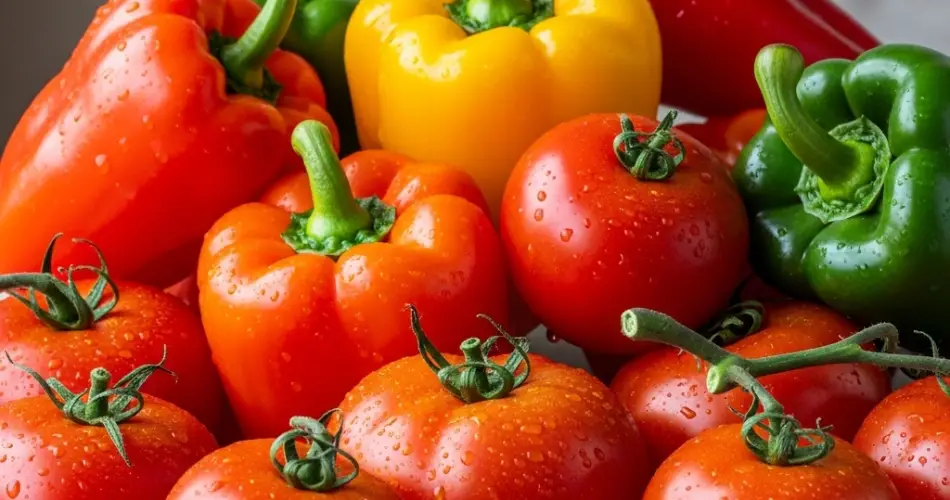Gardeners are constantly learning. With every planting season, we discover better techniques, improved methods, and shortcuts that make a big difference in plant health and yield. And sometimes, a single change in how we sow seeds can completely transform our results.
This article shares a simple, proven method of sowing tomato and pepper seeds that has dramatically improved germination rates, seedling strength, and ultimately, harvest yield. Once you try this approach, you’ll likely ask yourself the same question many experienced growers have: Why didn’t I do this earlier?
The Common Mistake with Sowing Tomato and Pepper Seeds
Many gardeners follow traditional sowing methods—placing seeds into soil, watering, and hoping for the best. While this approach may work, it doesn’t always produce strong, healthy seedlings. Problems like poor germination, leggy or weak sprouts, and uneven growth are common.
Tomatoes and peppers, although both warm-weather crops, have specific needs when germinating. Peppers, in particular, are slow to sprout and sensitive to cold or dry conditions. Tomatoes can germinate faster but often suffer from spindly growth when not given the right support from the start.
What’s often missing is a carefully prepared seed-starting strategy that supports strong root development and disease resistance from day one.
The Game-Changing Method: Pre-Soaking and Nutrient-Priming
The method involves a few extra steps compared to traditional sowing, but the payoff is remarkable. It combines pre-soaking the seeds, sowing in the right soil mix, and using a natural growth stimulant—all of which lead to faster sprouting and much healthier seedlings.
Step 1: Pre-Soaking the Seeds
Before sowing, soak your tomato and pepper seeds in warm (not hot) water for 6 to 8 hours. This softens the seed coat and activates the germination process. For even better results, use a solution of:
-
1 cup of warm water
-
A few drops of aloe vera juice or natural honey
Aloe vera contains growth hormones and anti-fungal properties that stimulate strong root growth and help prevent seed-borne disease. Honey is a natural antibacterial and encourages microbial activity that benefits the seedling.
After soaking, gently dry the seeds on a paper towel before planting.
Step 2: Use a Light, Airy Seed-Starting Mix
Tomato and pepper seeds thrive in loose, well-draining media. Avoid using heavy garden soil for starting seeds. Instead, make a homemade mix with:
-
2 parts coco coir or peat moss
-
1 part fine compost
-
1 part perlite or vermiculite
This blend retains moisture while allowing good air circulation, which reduces the risk of damping-off disease and promotes strong root development.
Step 3: Add a Spoonful of Nutrients to Each Cell or Pot
Before placing your seeds in the soil, add a tiny amount of a gentle organic nutrient blend to the bottom of each planting cell or container. This can include:
-
A pinch of worm castings or sifted compost
-
A tiny amount of wood ash (for potassium)
-
Optional: a dusting of cinnamon (natural antifungal)
This microdose of nutrition gives seedlings a boost from the beginning, without risking fertilizer burn.
Step 4: Maintain Ideal Conditions
For successful germination:
-
Keep the temperature between 24–28°C (75–82°F), especially for peppers
-
Cover trays with a humidity dome or plastic wrap to retain moisture
-
Provide 12–16 hours of light daily once seeds germinate—use a grow light or a bright window
-
Mist instead of watering heavily, to keep the soil lightly moist
Tomato seeds usually sprout within 5–7 days. Peppers may take 10–14 days, sometimes longer.
Results You Can Expect
Using this method, gardeners often report:
-
Faster, more uniform germination
-
Thicker stems and healthier leaves
-
Stronger, more developed roots
-
Greater resistance to transplant shock
-
Earlier flowering and fruit set
Even those who struggled with weak or inconsistent seedlings in the past see a dramatic difference in plant vigor.
Why This Works
The key to this method’s success is biological preparation. Soaking seeds gives them a head start, natural stimulants help awaken growth enzymes, and a carefully chosen soil mix ensures a strong foundation. With all these conditions optimized, the seedlings emerge faster and more robust.
Final Thoughts
If you’ve ever been disappointed with your tomato or pepper seedlings—leggy, weak, or slow to grow—this method can change your gardening experience. It’s simple, affordable, and uses natural ingredients that support healthy plant development right from the start.
After trying it, many gardeners no longer go back to old sowing methods. The difference in plant health, resilience, and eventual yield is simply too significant to ignore.
Try sowing your seeds this way this season—and like many others, you might find yourself saying, “I wish I’d done this years ago!”



